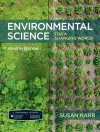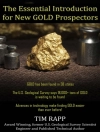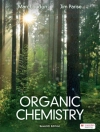Based on the author’s lectures to graduate students of geosciences, physics, chemistry and materials science, this didactic handbook covers basic aspects of ceramics such as composition and structure as well as such advanced topics as achieving specific functionalities by choosing the right materials. The focus lies on the thermal transformation processes of natural raw materials to arrive at traditional structural ceramics and on the general physical principles of advanced functional ceramics. The book thus provides practice-oriented information to readers in research, development and engineering on how to understand, make and improve ceramics and derived products, while also serving as a rapid reference for the practitioner. The choice of topics and style of presentation make it equally useful for chemists, materials scientists, engineers and mineralogists.
表中的内容
Preface
INTRODUCTION TO CLASSIC CERAMICS
Ceramics through the Ages, and Technological Progress
Classification of Ceramics
MINERALOGY, STRUCTURE, AND GREEN PROCESSING OF CLAY MINERALS
Natural Clay Minerals
Synthetic Raw Materials
Processing and Forming of Clay Powders
Rheology of Clay Particle Suspensions
Drying of Green Clay Bodies
IMPORTANT CERAMIC PHASE SYSTEMS
Fundamentals of Phase Diagrams
Phase Systems with Ceramic Relevance
MINERALOGY AND CHEMISTRY OF THE CERAMIC FIRING PROCESS
Introduction
Crystallography of the Thermal Transformations of Kaolinite
Thermal Transformations in Illitic Clays
Thermal Transformations and Phase Formation in the System Mg O-Ca O-Al2O3-Si O2
Thermal Transformations and Phase Formation in the System Mg O-(Fe2O3)-Al2O3-Si O2
MINERALOGY AND CHEMISTRY OF CEMENTS
Historical Development
Portland Cement
High Performance Concrete (HPC)
Environmental Impact and Concrete Recycling
Future Developments and Outlook
INTRODUCTION TO ADVANCED CERAMICS
General Properties of Advanced Ceramics
Current World Market Situation
Recent US and Global Forecasts
OXIDE CERAMICS: STRUCTURE, TECHNOLOGY, AND APPLICATIONS
Alumina
Zirconia
Titania
ELECTROCERAMIC MATERIALS
Introduction
Physics of Dielectric Materials
Ferroelectric Ceramics
Microwave Ceramics
Pyroelectric and Piezoelectric Ceramics
Electro-Optic Ceramics
Selected Application of Electroceramic Materials and Devices
SUPERCONDUCTING CERAMICS
Introduction
Definitions
Historical Developments
Material Classification
Crystal Chemistry
Theory
Materials Processing
Application of Ceramic Superconductors
Outlook and Future Developments
BIOCERAMIC MATERIALS
Introduction
The Concept and Definition of Biocompatibility
The Interaction of Implant Materials and Living Tissue: A Basic Approach
Mechanical Properties of Advanced Bioceramics: Alumina versus Zirconia
Selected Bioceramic Materials
Performance Requirements and Quality Control of Ceramic Femoral Ball Heads
Future Developments and Outlook
NON-OXIDE CERAMICS: STRUCTURE., TECHNOLOGY, AND APPLICATIONS
Introduction
Carbides
Nitrides
ADVANCED CERAMIC APPLICATIONS AND FUTURE DEVELOPMENT TRENDS
Design of Monodisperse Ceramic Powders
Ceramic Processing in a Microgravity Environment
Powder Preparation under Reduced Gravity
Ceramic Powder Synthesis by SHS
Nanosized Ceramic Powders
Future Development Trends
APPENDIX A: Construction of the Phase Diagram of a Binary System A-B with Ideal Solid Solution
APPENDIX B: Thermodynamics of Displacive Phase Transformation
APPENDIX C: Radial Electron Density Distribution (RED) Function
APPENDIX D: Thermodynamics of Spinodal Decomposition of Crystals
APPENDIX E: Theory of Superconductivity
关于作者
Robert Heimann is professor emeritus of applied mineralogy and materials science. He obtained his academic degrees from Freie Universitat (FU) Berlin, and subsequently served as a faculty member at FU Berlin and Universitat Karlsruhe. From 1979 on he worked in Canada as a research associate (Mc Master University), senior researcher (3M Canada Inc.), staff geochemist (Atomic Energy of Canada Limited), and research manager (Alberta Research Council). From 1993 to 2004 he was a full professor at TU Bergakademie Freiberg. Professor Heimann has authored over 270 scientific publications and in 2001 was awarded the Georg-Agricola-Medal of the German Mineralogical Society (DMG) for his outstanding lifetime achievements in applied mineralogy.












